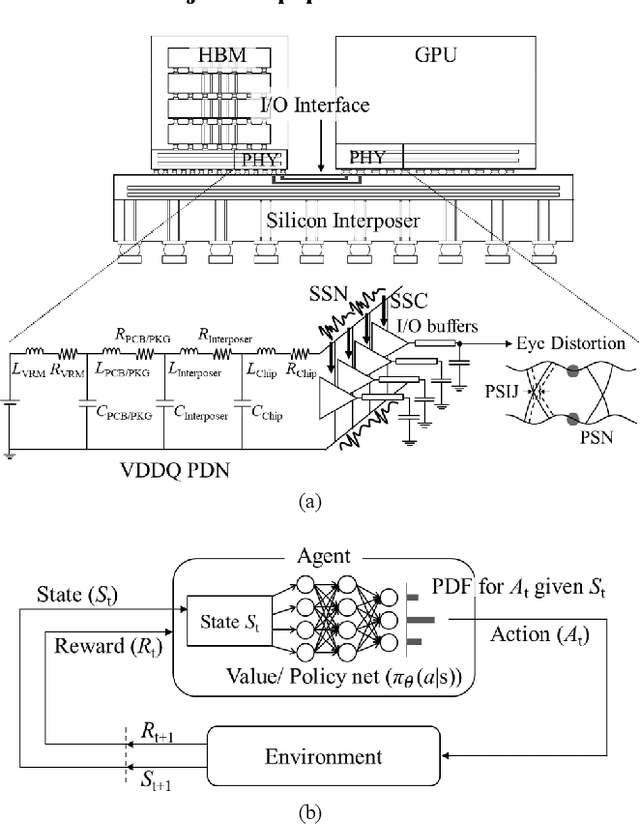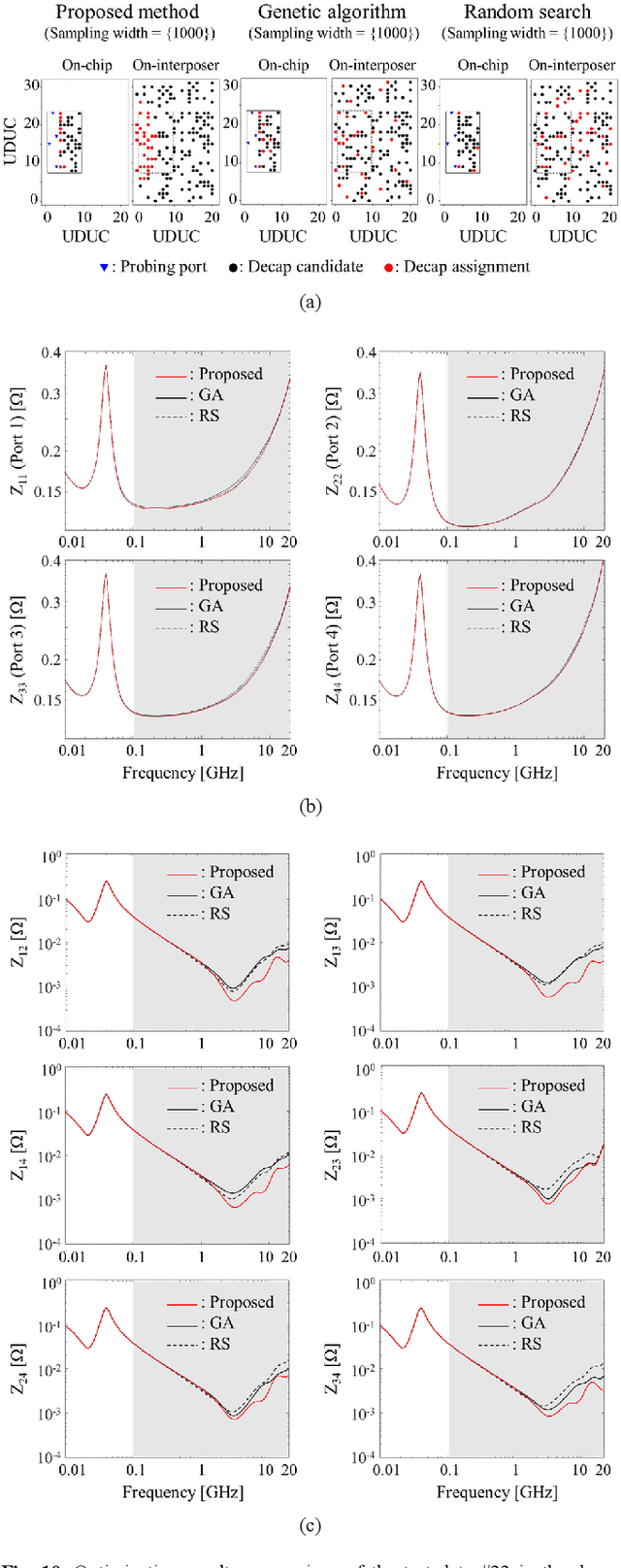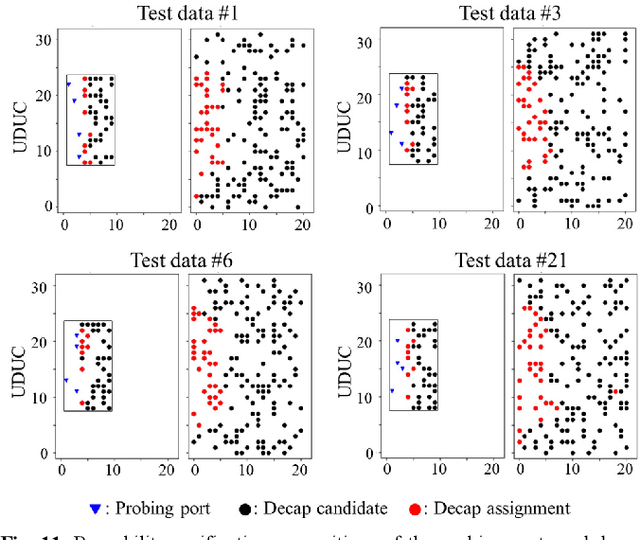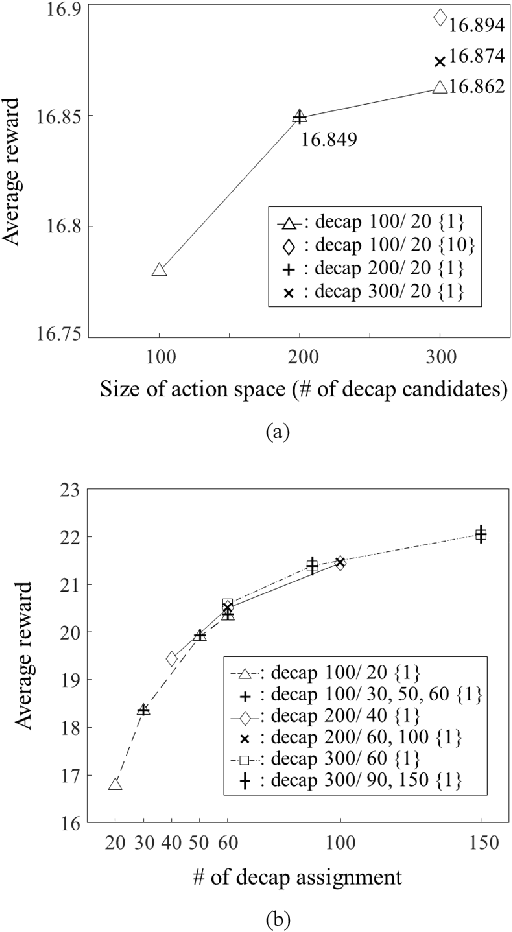Hyunwook Park
Transformer Network-based Reinforcement Learning Method for Power Distribution Network (PDN) Optimization of High Bandwidth Memory (HBM)
Mar 29, 2022



Abstract:In this article, for the first time, we propose a transformer network-based reinforcement learning (RL) method for power distribution network (PDN) optimization of high bandwidth memory (HBM). The proposed method can provide an optimal decoupling capacitor (decap) design to maximize the reduction of PDN self- and transfer impedance seen at multiple ports. An attention-based transformer network is implemented to directly parameterize decap optimization policy. The optimality performance is significantly improved since the attention mechanism has powerful expression to explore massive combinatorial space for decap assignments. Moreover, it can capture sequential relationships between the decap assignments. The computing time for optimization is dramatically reduced due to the reusable network on positions of probing ports and decap assignment candidates. This is because the transformer network has a context embedding process to capture meta-features including probing ports positions. In addition, the network is trained with randomly generated data sets. Therefore, without additional training, the trained network can solve new decap optimization problems. The computing time for training and data cost are critically decreased due to the scalability of the network. Thanks to its shared weight property, the network can adapt to a larger scale of problems without additional training. For verification, we compare the results with conventional genetic algorithm (GA), random search (RS), and all the previous RL-based methods. As a result, the proposed method outperforms in all the following aspects: optimality performance, computing time, and data efficiency.
Confidence Guided Depth Completion Network
Feb 07, 2022Abstract:The paper proposes an image-guided depth completion method to estimate accurate dense depth maps with fast computation time. The proposed network has two-stage structure. The first stage predicts a first depth map. Then, the second stage further refines the first depth map using the confidence maps. The second stage consists of two layers, each of which focuses on different regions and generates a refined depth map and a confidence map. The final depth map is obtained by combining two depth maps from the second stage using the corresponding confidence maps. Compared with the top-ranked models on the KITTI depth completion online leaderboard, the proposed model shows much faster computation time and competitive performance.
Unsupervised Anomaly Detection in MR Images using Multi-Contrast Information
May 19, 2021



Abstract:Anomaly detection in medical imaging is to distinguish the relevant biomarkers of diseases from those of normal tissues. Deep supervised learning methods have shown potentials in various detection tasks, but its performances would be limited in medical imaging fields where collecting annotated anomaly data is limited and labor-intensive. Therefore, unsupervised anomaly detection can be an effective tool for clinical practices, which uses only unlabeled normal images as training data. In this paper, we developed an unsupervised learning framework for pixel-wise anomaly detection in multi-contrast magnetic resonance imaging (MRI). The framework has two steps of feature generation and density estimation with Gaussian mixture model (GMM). A feature is derived through the learning of contrast-to-contrast translation that effectively captures the normal tissue characteristics in multi-contrast MRI. The feature is collaboratively used with another feature that is the low-dimensional representation of multi-contrast images. In density estimation using GMM, a simple but efficient way is introduced to handle the singularity problem which interrupts the joint learning process. The proposed method outperforms previous anomaly detection approaches. Quantitative and qualitative analyses demonstrate the effectiveness of the proposed method in anomaly detection for multi-contrast MRI.
 Add to Chrome
Add to Chrome Add to Firefox
Add to Firefox Add to Edge
Add to Edge